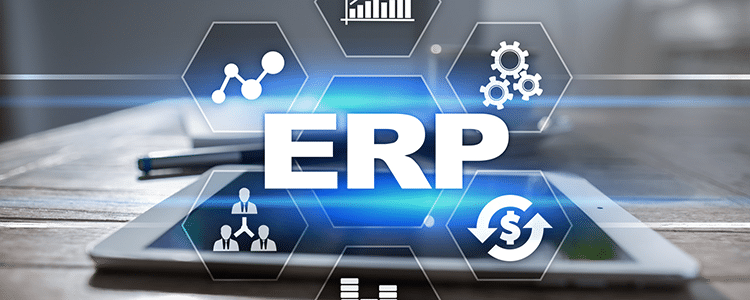2020 has arrived, and with it, an ongoing debate continues about enterprise resource planning (ERP) software and if it can manage bill of materials effectively and efficiently? It seems the industry changes its mind about the answer to this question depending on which way the wind is blowing. However, our answer to the question, Is ERP good enough to manage bill of materials (BOMs), is quite simple: Yes, ERP is good enough to manage BOMs, but you do need to have the right ERP solution.
What is a Bill of Materials?
To prove the point that you need the right ERP solution for your bill of materials, you have to start at the beginning in understanding what a bill of materials is and how having the right ERP solution provides a way for you to manage BOM effectively.
Bill of materials is a list of manufactured and raw materials needed to build an assembly of more than one manufactured part. BOMs are hierarchical with the top level representing the finished product, which can still be at a sub-assembly level or at a completed one. If you have a BOM that’s representative of a sub-assemblies, it is a modular BOM.
There are also what’s called a bill of materials “implosion” that links pieces that serve as components to a major assembly. On the opposite end of the spectrum, you can have a bill of materials “explosion” that breaks up the assembly or sub-assembly into multiple component parts.
If you don’t have an accurate BOM, the result is a manufacturing process that becomes inefficient due to inaccurate information. Almost every product efficiency rating or financial report completed with an inaccurate BOM will end up costing the company a lot of money when the mistake is found. An inaccurate BOM causes a trickle-down effect because knowing where your healthy margin line is in the sand can mean the difference between your business being successful or failing.
The 2025 Top 10 ERP Systems Report
What vendors are you considering for your ERP implementation? This list is a helpful starting point.
A Brief History of Bill of Materials in ERP
ERP software standardizes manufacturing and support processes, so it’s not surprising that ERP and BOM are a natural manufacturing and industry fit. In fact, it’s through BOM that ERP software was first used as an inventory control system in the 1960s, although it was called material requirement planning (MRP) at that time. MRP evolved into ERP when business modernized and became digital.
ERP software was devised to integrate and automate all the data management needed for a company’s business processes. It is a common database with one streamlined system that helps refine processes in a company. The result is increased productivity levels across the board in manufacturing processes.
Discrete ERP vs. Process ERP
The biggest difference between discrete ERP vs. process ERP is in how the manufacturing process system is broken down. Discrete manufacturing is for when you have distinct or identical products. Think of an assembly line with washing machines. If you’re filling a specific order, it’s easy enough to do because the product is easily identifiable.
Process manufacturing can’t use a standardized solution for assembling pieces because each one is different. Each piece is characterized by a formula or recipe for refining, separating, integrating or causing a chemical reaction between various ingredients so you can commoditize the product. Think of products like paint or gasoline. The end product can’t be unassembled to its original raw material form.
ERP software is beneficial in process manufacturing because one capability that ERP software provides is making formulation breakdown possible. In fact, when ERP solutions are properly implemented, they can help increase a company’s efficiency and optimize performance.
In our Manufacturing ERP Vendor Showdown, the Oracle ERP Cloud demo included a great overview of the system’s bill of materials functionality:
Bill of Materials vs. Formula Recipes
Formula recipes and bill of materials work for similar purposes but aren’t interchangeable. Many manufacturers misinterpret the meaning of each, which means the ERP solution they select may not work well for them.
The bill of materials in discrete manufacturing is fixed. You can use the same material for the same thing repeatedly which means your bill of materials is almost set in stone. The discrete manufacturer relies on a bill of materials because it lists and brings together the raw materials, sub-assemblies, parts, numbers and other relevant data that allow for the production of the end product.
Process manufacturers, on the other hand, must have the recipe or formula to make their end product. Because process manufacturers rely on mixing ingredients and getting the specific details about how much and which ingredients are correct, they need the formula recipe.
For example, if a manufacturer makes soup and they sell some soup in small cans to small restaurants and some soup in large cans to the larger restaurants, then the manufacturer must have two different recipes. The size of the soup containers determines which soups ingredients are used and how much soup is used for the end product assembly.
Considerations When Selecting ERP for Bill of Materials
There are certain considerations that need to be taken into account when selecting an ERP system for bill of materials. It’s important to note that ERP solutions are designed to handle discrete manufacturing and process manufacturing bill of materials very differently. For discrete products, each has a serial number while process products are tracked by variables like weight, volume and lot numbers.
ERP software can work for both. For instance, ERP used in process products can give you tracked production costs, generate what-if manufacturing financial scenarios, construct quantity and break down relationships between assemblies into percentages.
When you need to determine which ERP solution is needed for your bill of materials, our clients often use the following criteria:
- Is the ERP solution able to handle your unique tracking time and capacity?
- Is the ERP solution able to track component requirements at the right level of detail?
- Is the ERP solution able to support bill of materials calling out a particular revision of a part?
- Is the ERP solution able to specify multi-level product and sub-assembly bill of materials?
- Is the ERP solution able to meet your manufacturing lead times?
- Is the ERP solution able to create and maintain routings?
- Is the ERP solution able to store work instructions in a bill of materials or work order?
- Does the ERP solution provide templated BOMs for production, design or engineering?
We recommend gathering business requirements with your ERP project team and key employees so you can write ERP demo scripts that include your BOM-related requirements.
BOM Strategizing With the Right ERP Solution
When you find the right ERP solution for bill of materials, it will help you track any manufacturing process, including customized one-time orders. You can even create planning BOMs so you can strategize and forecast your material needs.
BOM through the right ERP solution, enhances inventory accuracy and flow. It also helps improve your material planning and gives you strategic advantages over other companies who can’t perform the same functions as you because they aren’t using the right ERP solution. These are just a few of the ERP business benefits that BOM functionality can provide.
When an ERP Solution Impacts Bill of Materials in Real Life
Many items that are found boxed up in final form went through some level of manufacturing BOM that you may not immediately realize. In fact, some of those items went through pad printing or painting before they were assembled into a final product. Only the final product that was altered by ‘paint’ is assembled into the final form.
The pre-processed part and the final ‘painted’ product are both represented on the manufacturing BOM. It’s the BOM that enables the final transition from an unfinished product or concept to a concrete object. The more complete and accurate the BOM is, the better decisions an organization will make about getting products efficiently and effectively manufactured and sent to customers.
When you select the right ERP solution in this real-life example, you get a business system that can help drive company operations, logistics, purchasing and inventory. The final result helps companies grow through supply chains that are more accurate, which results in more lucrative business decisions.
ERP Software for Your Bill of Material Needs
The role bill of materials is still being debated because there’s never been a consensus on the definition of bill of materials. However, one thing has been agreed upon: the right ERP solution can enable efficient manufacturing processes, and this includes bill of materials.
How do you find the right ERP solution to manage your bill of materials? Panorama’s ERP consultants can help you gather business requirements, submit RFPs to ERP vendors and evaluate RFP responses. This is just part of our ERP selection service offering. To learn more about the selection process, request a free consultation below.













